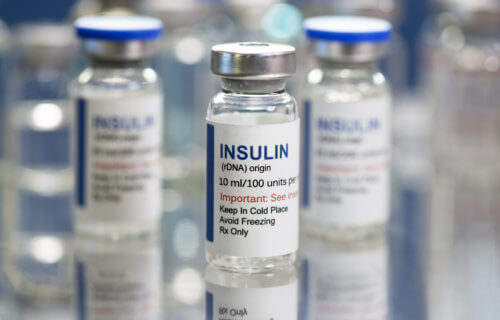MELBOURNE, Australia — Insulin was first mass-produced almost an entire century ago and has since remained an integral part of diabetes care. But what if an insulin-mimicking pill was available? Researchers from the Walter and Eliza Hall Institute (WEHI) have answered this question, finding alternatives that could promote better blood glucose uptake in the body without insulin at all.
“Since the discovery of insulin 100 years ago, the development of an insulin pill has been a dream for diabetes researchers but, after decades of trying, there has been little success,” says study lead author Dr. Nicholas Kirk in a media release.
Dr. Kirk and Professor Mike Lawrence collaborated with researchers from Eli Lilly, an American-based pharmaceutical company during this study.
More recently, research has begun to make progress. The development of cryo-electron microscopy (cryo-EM), a new technology that can visualize the architecture of complicated molecules, has allowed researchers to create 3D images (or “blueprints”) of the insulin receptor quickly.
“With cryo-EM, we can now directly compare how different molecules, including insulin, change the shape of the insulin receptor,” Dr. Kirk explains. “Insulin’s interaction turns out to be far more complex than anyone predicted, with both insulin and its receptor changing shape dramatically as they partner up.”
Insulin-mimicking molecules could also be financially beneficial
Using this technology, the team performed cryo-EM reconstructions to collect blueprints of different peptide molecules that can interact with the insulin receptor and keep it in an active position. This allows the researchers to see how an insulin-mimicking molecule can act on the receptor. Their experiments identified one particular peptide that can bind to and activate the receptor like insulin, and thus make it available for taking up blood glucose when levels rise.
This work has successfully answered questions that have puzzled scientists since insulin’s first use. Though these findings are promising, therapies with similar mechanisms of action remain far from clinical application. Even so, this discovery could pave the way for more studies to begin and deepen biological and clinical understanding of ways to generate a drug that replaces the need for insulin altogether, thus making the lives of insulin-dependent people much easier. With the rising prices of insulin, this is a welcome scientific development from a socioeconomic standpoint as well.
“Scientists have had success replacing these kinds of mimetic molecules with drugs that can be taken as pills,” Dr. Kirk says. “It’s still a long road that will require further research, but it’s exciting to know that our discovery opens the door for oral treatments for Type 1 diabetes.”
The findings are published in the journal Nature Communications.

